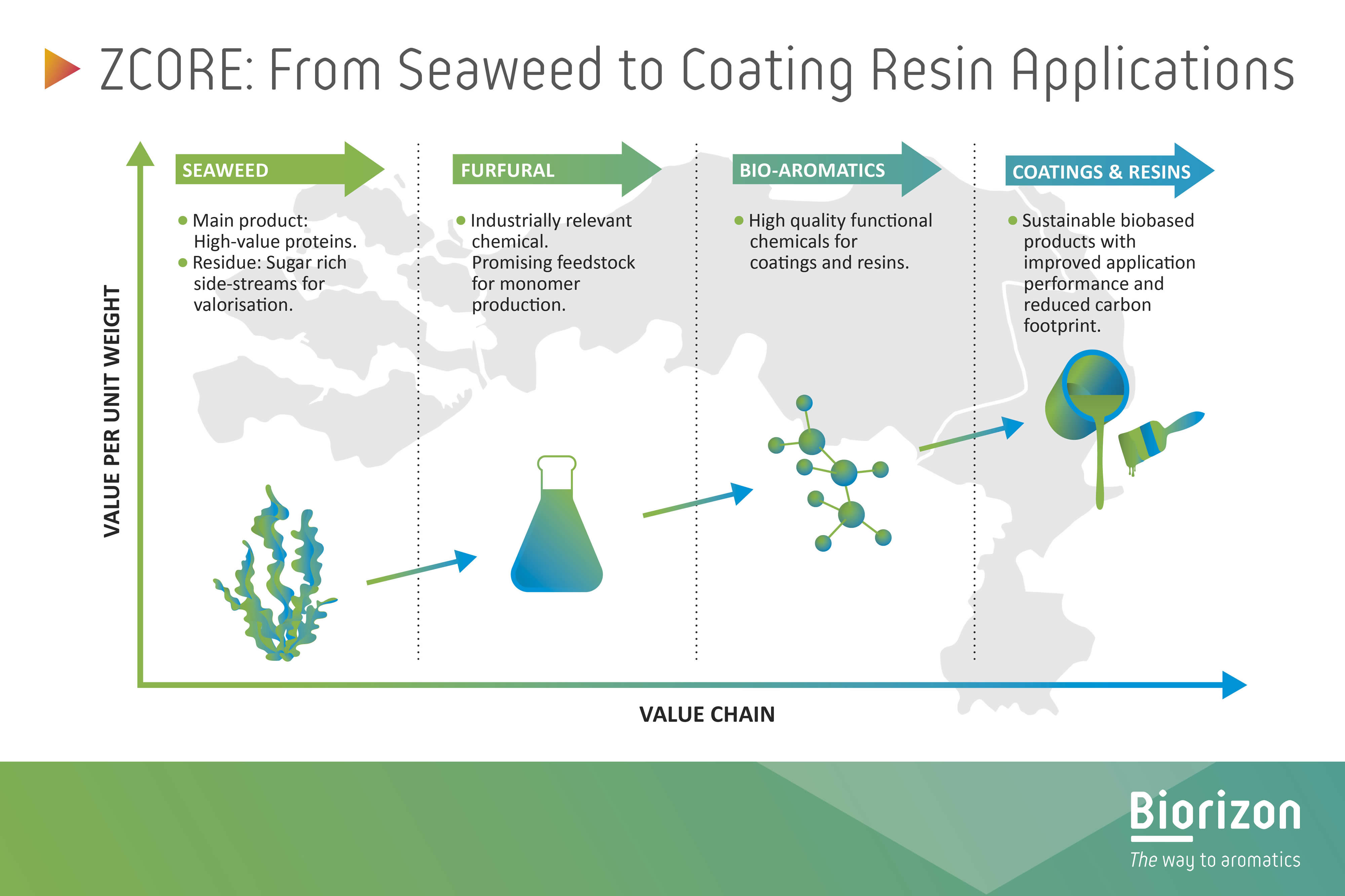News
31-01-2022
ZCORE: Greening the chemical industry with seaweed-based bio-coatings
Recently, Phyconomy published an article about Biorizon's ZCORE project that aims to to demonstrate that seaweed residues can be utilized for the production of biobased coatings (paints) with superior application properties.
Aromatics are a key component in many everyday applications. Biorizon’s ZCORE research project makes aromatics from seaweed residues to create better, more sustainable coatings.
Located in one of the world’s largest petrochemical clusters spanning the ports of Antwerp and Rotterdam, Biorizon Shared Research Center is the global leader in bio-aromatics research.
Of all chemicals produced, 40% are aromatic in nature, representing a global annual volume of 122 million tons. Functionalized derivatives of compounds with names like benzene, toluene and xylene give essential properties to plastics, paints, UV stabilizers, pigments, fibers, cosmetics, pharmaceuticals and food ingredients such as vitamins, colorants and flavouring additives. In other words, they are in everything.
Extracted and produced from petroleum, aromatics production is currently not sustainable, which means finding renewable feedstocks is urgent. Together with industrial partners, Biorizon develops technologies to use residual biomass and recycle streams for the production of bulk and specialty aromatics. These bio-aromatics provide new functionality and an impactful and green alternative for current petrochemical products that are difficult to re-use or recycle, including paints, adhesives and lubricants.

ZCORE: seaweed residues for bio-coatings
Whereas most research to date has focused on side streams of agricultural crops and forestry, Biorizon’s ZCORE research project uses seaweed residues as the feedstock to produce bio-aromatics. With a wide array of applications to choose from, the choice for bio-coatings has 2 reasons, explains Jaap W. Van Hal, innovation manager biorefinery at Biorizon co-initiator TNO.
“The margins for performance chemicals are much higher than for bulk chemicals, and the volumes you need are much smaller. On top of that, these particular components perform better than the fossil components they’re trying to replace. So, in this particular case, it’s not only bio-based, it also works better.”
ZCORE is currently using dulse (Palmaria palmata) for its experiments, but this is not the only option. While not all seaweeds are suitable, finally, it is the end application that determines the choice of seaweed.
A long-term vision
Together with industrial partners, Biorizon Shared Research Center is aiming to get bio-aromatics based on feedstock from agriculture and forestry in commercial production by 2025. For seaweed, the time horizon is longer term.
Van Hal: “Not only do you need innovations in making things from seaweed, but you also need innovations in seaweed cultivation. Especially for the seaweeds that have the right type of molecules for coatings, breeding and cultivating is a bit of a challenge compared to the browns. The browns are relatively easy to cultivate, but don’t have the right components.”
Van Hal estimates you need quantities in the order of magnitude of 25 000 tons of dried seaweed to make the bio-aromatics process work commercially for this application.

Source: Steven Hermans - Phyconomy






